Adam Heine's Blog, page 2
June 22, 2025
Talking Yourself through Drafting
I've learned (through time and work and lots of counseling) that it's not drafting I hated. I hated the fear of imperfection and getting it wrong. I hated the pressure that I put on myself to write well or write a lot (or both!). Most of all, I hated that I hated myself for not meeting my own expectations.
Drafting is still hard, but I've been learning how to have compassion on myself—not just the part of me that's writing but also the part that puts so much pressure on me. That part just wants me to achieve my goals! It just wasn't aware that some of the ways it did that were harming me.
I've been easing my way back into writing consistently, and I've found myself approaching it differently. The tips below are some of what I've been learning. Maybe they can help you too.
Focus on the current words/sentence/paragraph. Don't think about everything you have to do—how many words you've written, how much revision you'll have to do, what you need to do later that day... All of that is overwhelming and makes it impossible to write. When those thoughts come, hear them then let them go, and focus on the next words again.
When you feel stuck or scared, take a break. I don't mean a long break like I've suggested before. Take just a minute or two, or maybe even just one long, deep breath. The sentence you're stuck on will look different. The emotion that's sticking you will pass, often much faster than you think.
Trust your past self. You've written before. You've revised before. You can do it again. (Even if this is your first novel, you wrote the paragraphs and sentences that came before. You wrote stories in school. You've told stories about yourself to friends.) Trust that you write for a reason.
Trust your present self. Thoughts will come that what you're writing isn't very good or that it isn't working how you'd like. But your present self can't know what's working and what isn't—not until you see the whole picture together. Trust that what you're writing now is good enough for now.
Trust your future self. Even if what you're writing were bad, trust that you will be able to make it better later. More than that: you can't actually know how to make it better until later. Your future self will handle that, and they'll be just fine.
Give yourself grace. Writing goals are good if they help motivate you, but they can backfire just as easily. When you find yourself afraid of meeting your goals, give yourself permission to turn them off. Whatever you accomplish today is fine. Five words are more than zero. There will always be days that you struggle to write, but there will be days later that you don't as well. Whatever you can do is good.
You write for a reason, and there are people out there who want to know what that reason is. We're rooting for you.
Make sure you root for yourself, too.
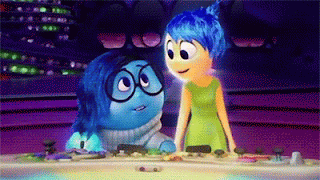
June 15, 2025
Human Editing vs. AI
I have my own issues with generative AI, but it is good at some tasks—tasks that (if it weren't for the copyright theft, plagiarism, labor theft, and climate-destroying energy needs) would actually be worth talking about in terms of how they can improve our lives.
One thing generative AI is genuinely good at is producing English sentences that sound intelligent. Among other things, this means it can be good at basic editing—making your words sound correct and smart—and it can even provide a kind of blind, meaning-agnostic textual analysis and recommendations for improvement.
That's editing, right? You can get it for free?!
Well, sort of. As with most things in our world, you get what you pay for. The Washington Post tested five generative AIs on their ability to perform this kind of editing. None of them did better than a D+, and only one of them didn't "hallucinate."
Free? Yes (for now).
Good?

If you have no money or critique partners, and you have the time and patience to investigate the accuracy of every suggestion, then AI can provide you with a kind of editing. It can make you sound intelligible... but not great or unique—literally the average of what the internet has to offer.
What can a human editor do, then, that the AI can't? Well, at their best, a human editor can provide the following:
A-level corrections, recommendations, and analysisInsightful comments from a human who understands your intention and meaningExperience that comes from being an editor, a writer, and a humanSuggestions that maintain your unique voice and vision as an authorHarsh truths to help you improveRevisions that don't make up facts out of nowhereConnection with a human who's rooting for youThat's not to say all human editors are always amazing or do all these things, but an LLM never will. Finding a good editor is hard, but there are many out there who are worth the price.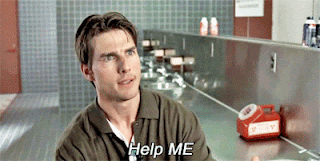
The danger of generative AI is not that it's bad at things; it's that AI's intelligent-sounding answers fool us into thinking it's good at things, so we trust it with more than we should. We believe it knows more than it actually does.
I'm not gonna say don't use AI, and I'm not gonna say human editors are perfect. But if you choose AI, know what you're settling for, and if you hire a human editor, find one who provides value that's worth it to you.(Am I one of those editors? Well, you can always try me out and see! A sample edit costs nothing but time.)
June 1, 2025
World-Building 105: Putting It on the Page
To recap the last few posts, we've talked about the following:
What world-building is and how to get startedHow to keep your world-building organizedThe helpfulness of maps (yay!)How to make a setting compellingSo far, 100% of the info created through these tips is for you, the author—notes, maps, lists, Q&As. These are aids in writing your story, not the information you actually show the reader.Because the goal of world-building is not to show the reader all the cool stuff you thought up but to immerse them in another place and time, to make them feel like there's more to the world than what they see, to help them believe this is a real place that could exist.
So, how do we do that with *waves hands around* all those notes and maps and junk?
Using World-Building in Your Draft
As you write, you will naturally drop hints about your world. Sometimes you have to explain things for the plot. Other times, you're just describing what's in the scene. Either way, something comes up that you can't assume the reader knows. Like...
The protagonist will be looking at the stars, and you mention the setting's two moons. The protagonist steps on a teleporter and thinks about how the technology works. Or they learn that they are part of an ancient prophecy that you now need to explain to the reader.
Or a thousand other tiny details that come up as you draft. Wherever it happens, you'll want to keep two things in mind:
Let the reader believe there is more to the world than what you're telling them.Let the reader experience the world rather than be told about it.These are guidelines, of course, and you'll have to find a balance. But the goal is to maintain the illusion that there is always more to discover.
"Part of the attraction of the Lord of the Rings is, I think, due to the glimpses of a large history in the background: an attraction like that of viewing a far off an unvisited island, or seeing the towers of a distant city gleaming in a sunlit mist. To go there is to destroy the magic, unless new unattainable vistas are again revealed."
—J. R. R. Tolkien
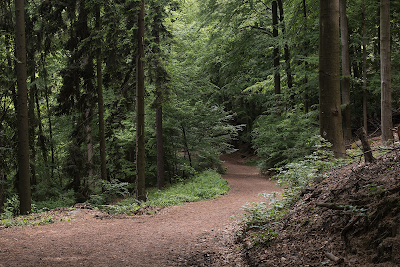
Right, But... How?
Well, for example, as you describe the setting's two moons, do so through the protagonist's perspective. How do the moons make them feel? Maybe they're lost in a forest but thankful for the light of the two moons to guide them. Maybe they used to look at the moons as a child and felt safe under one and uncomfortable under the other. In this way, we experience what the protagonist is experiencing, and the world-building is deepened at the same time.
Or maybe in your world bible, you know that the moons were set there by the gods or that one of the moons houses a magical prison. Or maybe you know nothing more about them at all—that's fine too! But as you describe them in your draft, you don't say what you know them to be, but you might say what people believe them to be. Like, maybe the protagonist's grandmother used to tell them a story about the moons that they now think is silly (but that maybe has a grain of truth to it—or not!).Or maybe they're just moons. That's fine too.
What about the teleporter?
You probably don't want to go into the whole history and function of the technology unless that's a thing the protagonist would be thinking about (maybe they built them!). But again, how does the protagonist feel about teleporters? How do they think they work? Maybe they don't know at all, and that worries them every time even though they've used them their entire life. Maybe they heard a story about someone who got messed up by one, and they wonder if it's scientifically accurate. Maybe they have full confidence in them and quietly judge the folks who fear them.
Little extra thoughts like these help us experience the teleporter while also suggesting that there might be more to it than we know—there's more to discover.
And the prophecy? Don't exposit the prophecy like a history textbook. Reveal it through the lens of the character who explains it and of the protagonist themselves. How do these two characters feel about it? What does it mean to them? Do either of them doubt the prophecy? Fear it? Zealously believe it?
Again, now we're experiencing the world-building. It matters to us because it matters to characters that we care about.
And also, we're never getting the whole story (that's in your world bible) but rather what the characters know or believe about it. This way, the world always remains bigger than anything the reader can experience.
Avoiding(?) Infodumps
We're often told to avoid the dreaded infodump. As with most things, this is more what you'd call a guideline than an actual rule, but the reason infodumps are dangerous is because (1) they tend to be telling rather than allowing the reader to experience the world, and (2) they tend to tell everything the author has ever thought.
But that doesn't mean you can't use them. An infodump from an in-world narrator's perspective, that also leaves some things mysterious, can be just as compelling as any bit of action.
Leaving some mystery can help a world feel real and lived in, like there's always more to discover just around the next corner. It's a type of mystery that can pull your reader into the world.
And letting the reader experience the world through your characters keeps them invested. They want to learn about the prophecy because their favorite character's goals depend on it. They want to know how the teleporter works because Captain Dan wants to know (or because he already does know, and who doesn't want to be cool like Captain Dan?).
All those notes you took answering questions and organizing your thoughts give you a deep well to draw from as you guide your protagonist and your reader through the world. You'll think of new things as you draft, and you can add those to your notes, too. Every bit of it makes your world deeper, more immersive, and more real.
Just remember to keep some of those bits for yourself.
May 25, 2025
World-Building 104: Making a World That's Compelling
This is part of a series on fictional world-building. We've talked about how to get started, how to organize your thoughts, and how you can use maps for inspiration and internal consistency.
We've noted several times that world-building can be a huge endeavor. Even if your setting is mostly true-to-life, you're still creating a whole made-up world to immerse the reader in. It can be overwhelming to think of everything that is—or even just could be!—true within your setting.
On top of it all, you want your world to be compelling, to draw the reader in so that they want—no, need!—to know more about its mysteries and what happens next to the characters in it.
How do you do that?
To make a world that's compelling requires two of the same things that make your plot and characters compelling: conflict and theme.
Let me explain.
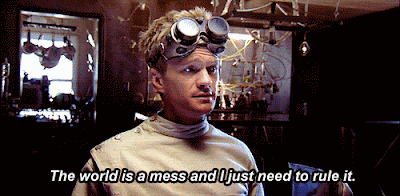
Conflict
A good plot has conflict—usually grown out of the conflicting goals of the characters within it. Luke Skywalker wants to save the princess from the evil Darth Vader. Eleanor Shellstrop wants to stay in the Good Place even though she doesn't belong there. The Baudelaire orphans want to escape the evil Count Olaf.
These conflicts are what make these stories compelling. We root for these characters and want them to succeed. But the worlds of each of these stories have their own inherent conflicts as well (major spoilers deliberately avoided below):
In Star Wars, the Galactic Empire oppresses the entire galaxy, while the Rebel Alliance struggles to resist their fascist rule.In The Good Place, humans face a universal point system that determines whether they live in paradise or are tortured for eternity.In A Series of Unfortunate Events, a mysterious organization secretly helps people and thwarts those who would do harm.These conflicts are all part of the world-building of their respective settings. They exist whether or not the characters are aware of them or even engage in them.Though, as you may have noticed, characters are frequently involved in their world's conflict. That's part of what makes their stories so compelling. You certainly can tell stories in these settings that don't engage with the world's conflict (the Star Wars universe does all the time!), but those stories are often seen as side stories—fun but maybe not as compelling as the stories that change the setting itself.
Conflict in world-building provides a deep well of ideas and plots to draw from as you tell your characters' stories. It helps the reader become even more invested in your story.
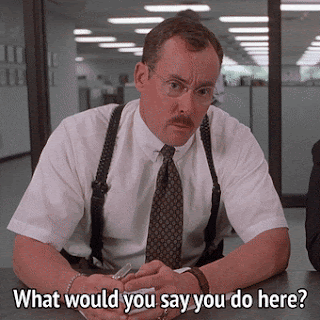
Theme
Related to conflict is your world's theme. This element often remains under the surface, rarely stated outright and sometimes even ambiguous. Readers may not know or even care what the theme is, but your theme can help you make decisions about what is in the world while also making everything feel more connected.
Again, the world's theme might not be the same as the theme of your story. Star Wars is about a farm boy learning that he is capable of so much more. In The Good Place, a selfish woman learns to live ethically. The orphans of Unfortunate Events learn to navigate a world that is more dangerous than they knew. But each of these worlds also has themes independent of the characters and plots within them:The world of Star Wars explores themes of fascism, freedom, and resistance.The world of The Good Place explores ethics and morality.The world of Unfortunate Events revolves around education vs. ignorance and what it means to do the right thing.Your world's theme is usually tied to the world's conflict. And yes, your plot's theme will often touch on the world's theme, but it doesn't have to.
Theme aids world-building as a means of making decisions. Say you were creating a new planet in Star Wars, and you're trying to decide its history and characteristics. These could be literally anything—a world within a world! How do you decide?
Well, think about the world's larger theme and conflict. What does this new planet have to do with the rebellion against the Empire? Maybe it's on one side or the other. Maybe it has tried to stay deliberately neutral and uninvolved. These decisions can help guide you as you detail the planet.
Even if the planet has nothing to do with the Empire, the world's theme can guide decisions about the people and culture. How have these people wrestled with fascism, freedom, and resistance? Maybe a local ruler oppresses the local farmers in some way. How? Are the farmers resisting, have they given up, or do they believe the ruler to be beneficent? Or maybe the planet has devised a form of government to prevent fascist rule. What does that look like? How did they arrive at that?
By using the world's theme, we've gone from "This planet can be literally anything! HELP!" to a smaller set of questions that not only focus our ideas but also complement the larger conflicts within the world. The world's theme helps us arrive at decisions while simultaneously making the entire setting deeper, more connected, and more compelling.
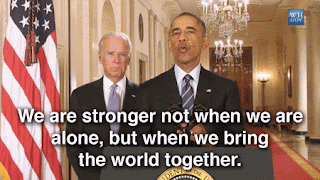
Putting It All Together
The best part of world-building is that you can come at these elements from any direction and it still works. Themes might emerge from a conflict you already have in mind. Conflict might be defined by themes you already want to explore. Either might arise from a character or plotline that you've already thought up in your head.
And when you become aware of the conflicts and themes in your plot, characters, and world—and when all those conflicts and themes begin to inform each other—you end up with a world and, more importantly, a story that is even more compelling than the random, cool ideas you scratched down at the start.
Now, you just gotta use that information in an actual draft. We'll talk about that next time.
May 18, 2025
World-Building 103: Maps!
Today, we're going to talk about one of my favorite parts of world-building: maps! This is the third part of a series on world-building. The first two parts can be found here:
How to get startedHow to get organizedOften, we think of novel maps as big, complicated (possibly overkill?) illustrations used primarily for secondary fantasy worlds like in the Lord of the Rings or Song of Ice and Fire series. They're pretty and scary and pretty scary when you think about making them yourself!Big fantasy novels often publish their maps as part of the book, and that's certainly something you can explore, but for our purposes today, we're just talking about maps to help you draft and deepen your world.
These maps can be as big as a world or as small as a village or even a single house. They are not for the reader; they're for you, the author.
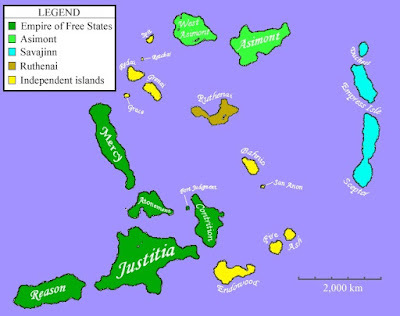 An early map I drew for my old Air Pirates novel (that I have to get back to some day)
An early map I drew for my old Air Pirates novel (that I have to get back to some day)How Do Maps Help With World-Building?
Maps can provide several benefits to your story, even if nobody ever sees them but you:A map helps maintain consistency. Like a world bible, a map provides a way to keep track of things in your story—specifically, where things are relative to each other and how far away they are.A map helps you think things through. Drawing a map—like drawing anything—requires dozens of tiny decisions that you might not have thought about if you were just looking at words in a word bible. How large is this place? What does it look like? How far is it from that other place? How did it get there? What resources is it near? It's another avenue of questions to ask that can deepen your world.A map can inspire new ideas. You'll start your map with the locations you know, but pretty soon, you'll run into areas that provoke new ideas. What would be located in this space here? How might that impact the people in the other places? What cool thing might go in this empty space?A map can immerse you in the world. One reason maps are published in novels is to immerse the reader in their worlds. Making your own map can do the same for you. And as I've said before, if you are immersed in your world, your reader will be too.
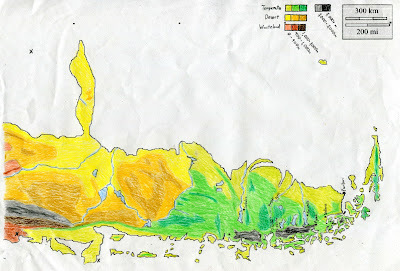 The map for my Post-Apoc Ninjas novel
The map for my Post-Apoc Ninjas novelHow Do You Make a Map?
There are lots of ways to make your own map, but my preference is to actually draw the thing. You don't have to be an artist, and it doesn't have to make sense to anyone but you, but drawing your own map gives you several advantages over, say, finding or generating a map online:It's faster. This feels counterintuitive, but it's true—I've spent enough time with map generators to know. Usually, you spend a lot of time generating new maps (or trying new searches) when it would be much quicker to just do a couple of drafts yourself.You get exactly what you want. You may not know what you want right away, but when you start generating maps, you quickly realize you know what you don't want. This is one of the reasons drawing your own map is actually faster. Drawing your own forces you to think it through and make decisions, until you realize you actually do want certain things.It's easy to revise. This is another reason that finding or generating a map doesn't work as well: you know it's not what you want, but you can't just tweak things here and there. You have to generate a whole new map with different parameters. Drawing your own map, revision is as simple as a quick erase.(Interestingly, the same advantages above apply to using AI to create anything—writing a novel or creating an image or whatever. It feels like AI will save you time, but in the end, it actually takes longer and is never quite what you want, and that's not counting AI's other problems.)
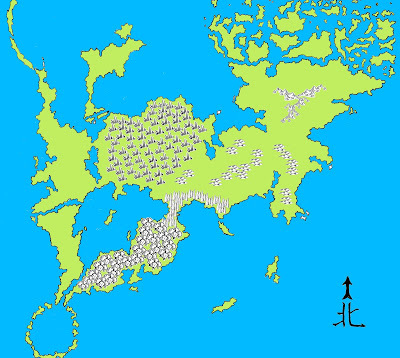 A map for a secret project I co-authored with a friend (man, I want to return to this one, too)
A map for a secret project I co-authored with a friend (man, I want to return to this one, too)How Do You Use the Map?
Most of the utility you'll get from your map will come as you're actually making it—as you're asking and answering questions and recording dozens of large and small decisions. A map can also be an inspiring thing to look at every time you sit down to write.
And, depending on your story, you might occasionally use it to determine times and distances, though this happens a lot less often than you'd think... even in a book that's all about walking:
As you write your story, your map will be useful for reference and inspiration, but always remember one key thing: your reader will never see it. It can be tricky to write for someone who can't see what you see, but as with most things, it's a skill you can learn.
In the end, the goal of your map is not to be perfect or pretty or to ever be seen by anyone. It's help your world remain consistent and to help you immerse yourself in that world. Because when you're immersed in your own world...
You know the rest.
May 11, 2025
World-Building 102: Getting Organized
Last week, we talked about what world-building is and how to get started. Among other things, we learned that world-building is... well, it can be a lot.
Even if you're just taking regular old modern-day Earth and giving it a small tweak—like humans figure out how to get to Mars or there are actual witches—there are still dozens of questions and implications that you could think through to deepen the world. And for a full-blown secondary fantasy world? The questions are endless.
So today, we'll talk about organizing all of that so you don't get overwhelmed.
1) Start a world bible
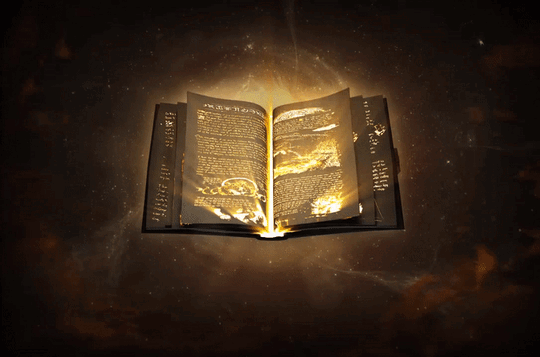
A world bible is just a document (or a wiki or a Miro board or something) where you record your ideas and decisions. You'll need this so you can remember them and reference them later.
How you organize your world bible is up to you—the document is literally there to aid you and you alone. I like to separate mine into sections like a historical timeline, nations or kingdoms, sentient species, cosmology (how the world came to be), how magic works, unique plants and animals, etc. Obviously, not every story needs every section, but these are places to start.
Remember, too, that your world bible is a living document. It is for your benefit only, and you can revise and add to it as you need to.
2) Choose a point and work outward
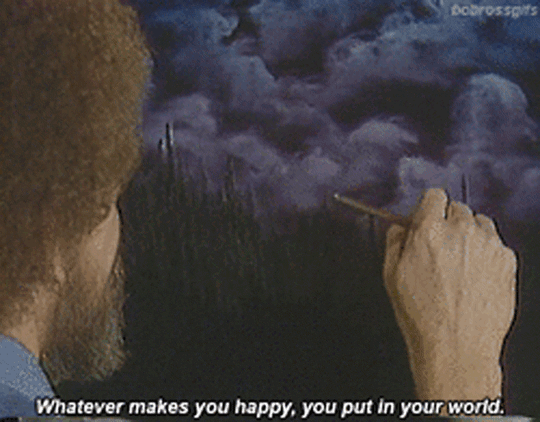
It's overwhelming to try and think about everything at once, but the point of having a world bible is that you don't have to keep it all in your head. You can have one idea, write it down, and then move on to the next.
Maybe a cool idea for your magic system makes you think of some war that might have occurred—jot down the magic idea then move over to the history section. Maybe writing down ideas for that war raises the question of how many nations there are and what state they're in today—scroll down to the list of nations and start brainstorming some ideas for that.
Don't know how to answer a question yet? That's okay. Just write the question down and move on.
What if a new idea conflicts with an older one? That's okay! Again, nobody else is going to read this document, so it doesn't have to maintain internal consistency. I mean, you should try, but you can address conflicts as you discover them.
Often, when a new idea conflicts with something you thought of a while ago, you'll find that the older idea can be easily updated or dismissed. And if it can't, then maybe the new idea can be tweaked. Consistency is important in world-building, and it's a lot easier to create when you haven't even written the story yet.
SIDEBAR: Creating a world bible for collaboration—say, for a video game or when co-authoring a novel—does require more internal consistency. People who are not you will reference the world bible and assume what's in there is fact. The basic ideas in this post still apply though. You and your collaborators just have to do extra work to keep the world bible up to date.
3) Sketch out a timeline of events
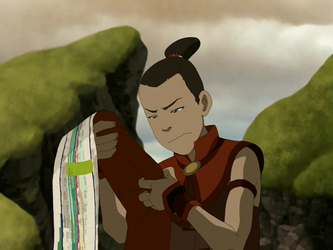
I mentioned a timeline as part of the world bible. For me, this is where I often start, and it often becomes the backbone of my world. It helps me to understand how one thing led to another and how everything is connected.
It might not work that way for you, but a timeline is still a good thing to have. Understanding the larger story of your world is a good way to maintain consistency and create real depth.
4) Focus on your story
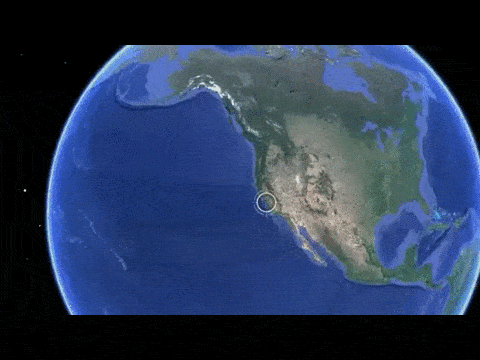
It's easy to go overboard on details and histories and nations and magic systems and flora and fauna... but remember that you don't have to flesh out everything. You really only need enough details to start writing your story.
When you feel yourself getting overwhelmed with questions or unable to detail some aspect of the world (or unwilling to because it feels boring), take a step back. Ask yourself, "Do I need to know this to write my story?"
Often, you don't.
Because world-building isn't about actually creating an entire world; it's about creating the illusion that you've created an entire world. And that's a lot easier to do.
How do you know when you're done?

The truth is you're never done. There are always more details you can think up (and there always will be when you start writing the story). The good news is that you don't have to be done to start writing.
World-building of the kind I've described above has two main goals:
To help you understand your world enough to start writingTo give you extra details to draw from when you need themWe'll talk more about the latter one in a future post. But for now, you know you're done when you feel immersed in the world and ready to start writing the story.Like I said before, if you are immersed in your world, then you can immerse your reader in it too, and that is the whole purpose of all of this.
May 18, 2018
Finding What Works for You
Let's talk a bit about online presence—how writers and other creatives are told (or expected) to have one whether they like it or not. You gotta be on Twitter and Facebook and Instagram and blogging (well, maybe not blogging anymore, but I will! Sometimes! Screw you, conventional wisdom!).
So the two of you who pay attention know that I've been streaming on Sunday nights for *checks calendar* about a year now. I started because it looked like fun, because I thought it would b...
April 2, 2018
Editing Tip: Consistency, Consistency, Consistency
So, I'm a very meticulous human being (most of the time). I like precision, accuracy, and the difference between the two. I like knowing the right way to do things, and I very much like doing things that way.
Which is why the English language drives me absolutely nutty.
One space after a period or two? Leaped or leapt? Jesus' or Jesus's? God da...
March 27, 2018
March Update
I'm writing dialogue for a game I can't announce yet (but will as soon as I'm allowed). There should be a reveal trailer soon, though I don't expect the actual game to be done for several months or more.I'm writing a gamebook-as-mobile-app (I'm doing the writing and choice design; the publisher is doing the systems design and actual functionality). So far, I've turned in three chapters out of ten. I hope...
February 5, 2018
Brief Work Notice
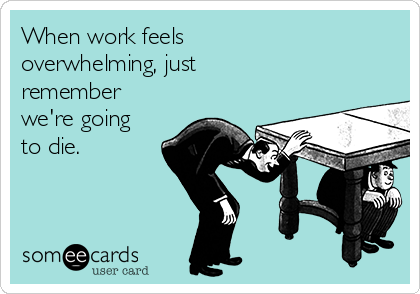
When I do post, I have some writing/editing tips for you—things I always wish I had known and now I do.



